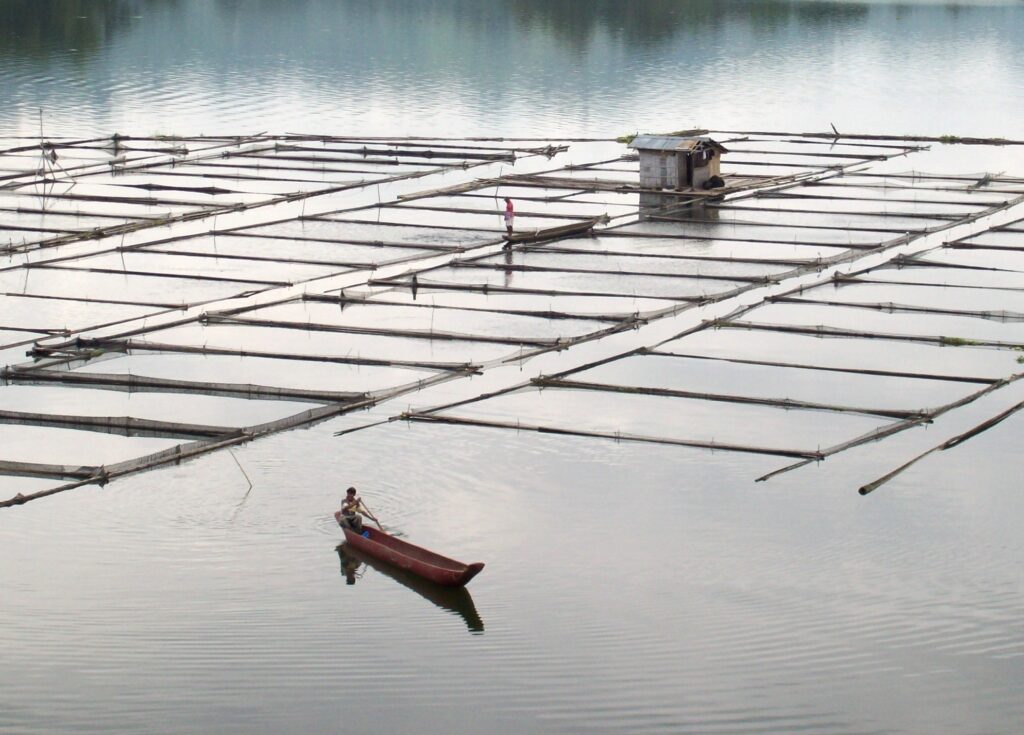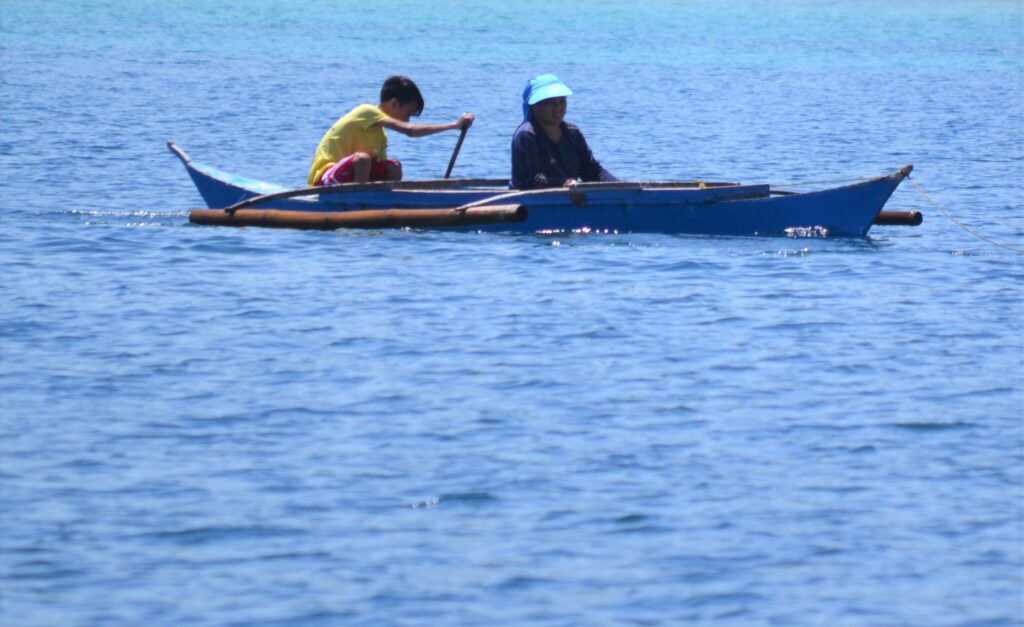Text and Photos by Henrylito D. Tacio
Lake Sebu, a town in the province of South Cotabato, is often dubbed the “Summer Capital of Southern Philippines” as its climate is pleasantly cool (due to an elevation of 1,000 meters high from sea level).
But what most people don’t know is that there are actually three lakes. Lake Sebu (from which the name of the town got its name) is the largest as it occupies 354 hectares. The other two are named Seloton (48 hectares) and Lahit (24 hectares).
With these three large bodies of water, it is not surprising that the municipality has “a vibrant ecotourism economy based on the aquaculture of tilapia grown in floating cages,” to quote the words of Dr. Rafael D. Guerrero III, former director of the Philippine Council for Aquaculture and Marine Research and Development.
But it’s not rosy, though. According to Dr. Guerrero, tilapia production in Lake Sebu is beset with the perennial problem of fish kills, who is now an Academician with the National Academy of Science and Technology.
In January and August of 2012, P3.8 million and P0.65 million of losses were reported due to fish kills in Lake Sebu. In 2013, a loss of 20 metric tons of fish was also incurred. In February 2014, a loss of 68 tons with a value of P5.2 million was reported.

“The fish kills in Lake Sebu are caused by overturns in the lake, known locally as ‘kamahong,’ which take place naturally in Taal Lake in Batangas,” reported Dr. Guerrero. “During a lake overturn, which usually occurs in the cooler months of the year, strong cool
winds cause the upper water portion of the lake to become heavier in mass than the water at the lake’s bottom.”
The sinking of the upper water column, he further explained, pushes up the bottom column that is poor in oxygen and toxic compounds like hydrogen sulfide, and this kills the fish in floating cages.
The same reason was cited as the culprit of the fish kill that happened last June. The incident destroyed around 4,000 kilos of tilapia in Lake Sebu and 320 kilos in Lake Seloton. By October, it occurred again, hitting an estimated 200 fish cages.
But Lake Sebu was not the only place where fish kills happened. A fish kill was recently reported in two barangays in Isabela town, situated along Binalbagan River in southern Negros Occidental. Five months later, another fish kill occurred in the coastal waters of Cavite, which affected the towns of Tanza and Rosario.
Since fish kill – also known as fish die-off – happens all the time in the Philippines, a timely study was conducted to assess the effects of excessive aquaculture structures and stocking density on water quality and aquaculture production.
The study – done by Zenaida M. Sumalde, Karen Lou A. Francisco, and Mildren Peñales – was financially supported by the Economy and Environment Program for Southeast Asia (EEPSEA).
The researchers conducted the study in Bolinao, Pangasinan, a major aquaculture producing municipalities in the country.
“Occurrences of fish kills had been common in Bolinao but were undocumented since most of the occurrences are site specific – that is, by specific pens or cages – not throughout the whole aquaculture area,” the three authors reported.
Fish kills happen all year-round in specific fish pens in Bolinao and two other aquaculture towns, Dagupan and Anda. The rates of fish kill peak during the months of April, May, and June. But these don’t alarm officials as these are “isolated occurrences.”
But it changed when a major fish kills occurred on February 1-3 in 2002. It was considered the worst fish kill event that ever happened in the country.
“It started in the evening of February 1, during a neap tide when tidal currents are slow, causing less oxygen-rich water flowing in from offshore areas,” the authors wrote. “A few days before the event, operators had been reported to have been using aerators to introduce oxygen into the fish pens or cages. This practice is typical in fishponds where water does not flow in naturally, but not in coastal waters where water currents provide oxygen. The use of aerators is also an indication that there was high oxygen demand in the area.”

It was observed that two days before the fish kills happened, the milkfish (Bangus) “were crowding the surface, evidently gasping for air due to low dissolved oxygen (DO) in the water.”
Water-quality testing conducted by the Bureau of Fisheries and Aquatic Resources (BFAR) a few days before and during the fish kills in Bolinao pointed out that the DO level was only 1.5 parts per million (ppm) – way below the recommended level of 5 ppm for fish growth.
Unlike the previous isolated events, these fish kill affected not only Bolinao but also other villages near it. Fish kills occurred in Luciente 1, Lucente 2, Luna, Salud, Lucero, and Tara.
The damage was so large (estimated value was P600 million) that the Senate Committee on Local Government urged to conduct an inquiry to aid in creating appropriate legislation.
On February 5, the Marine Science Institute of the University of the Philippines issued a statement that the fish kills indicated two causes: a bloom of dinoflagellates (plankton cells) associated with eutrophied water and low DO levels in the municipal waters of Bolinao.
Dinoflagellates are known to asphyxiate fish, and a high density of them was found in the water column and the gills of the fish. This was the first time such a bloom occurred in the country.
The question remains: what really caused the massive fish kills?
The three authors surmised in their study: “The ultimate cause has to be associated with aquaculture practices, although no definitive proof can be established. The decrease in DO was not a sudden event, but is associated with the large increase in the number of fish pens and fish cages and resulting unconsumed feeds and fish wastes.”
In a report published by “Philippine Daily Inquirer,” the BFAR regional chief was quoted as saying: “Around 30% of the feeds given are not consumed by the fish culture and are eventually thrown out into the water and seabed.”
The three authors again wrote this conclusion: “The build-up of organic matter eventually leads to eutrophication, which caused a phytoplankton bloom. The bloom led to an increased rate of die-off resulting in more organic matter on the sea bottom. Decomposition of the additional organic matter then depleted the dissolved oxygen in the water and caused further stress to the confined fish.”
But there’s more to fish kills than just economic loss. There are also health issues to it. “In the wake of the 2002 fish kills, 75 people were hospitalized due to allergic reactions after dried milkfish and other people who were affected complained of headache, dizziness, vomiting, difficulty in breathing, abdominal pain, nape pain, itchiness, chest pain and skin redness,” the authors wrote.
Based on the study’s outcome, the authors suggested several policy implications and better regulation of coastal aquaculture operation. These include strict enforcement of the Municipal Fishery Ordinance, penalties for a violation that is high enough to violate the ordinance costly, and incentives for compliance to the ordinance considered (like reduction in taxes and technical assistance).
“Authorities need to better communicate the risks associated with overstocking to aquaculture operators and to provide evidence that there are negative consequences to them as well as their community if they put too many fish in their enclosures,” the authors pointed out.

